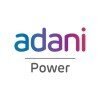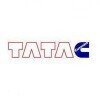Diploma Trainee
10+ Diploma Trainee Interview Questions and Answers

Asked in Bajaj Auto

Q. What is the fuel-to-air mixture ratio in a combustion engine?
The ratio of fuel and air mixture in combustion engine is called air-fuel ratio.
Air-fuel ratio is the amount of air mixed with fuel in the combustion chamber of an engine.
The ideal air-fuel ratio for gasoline engines is 14.7:1.
The air-fuel ratio can be adjusted to optimize engine performance and fuel efficiency.
A rich air-fuel ratio (more fuel, less air) can cause poor fuel economy and increased emissions.
A lean air-fuel ratio (more air, less fuel) can cause engine misfires a...read more

Asked in Cummins

Q. What is the difference between a 2-stroke and a 4-stroke engine?
2 stroke engines have a power stroke in each revolution, while 4 stroke engines have a power stroke in every other revolution.
2 stroke engines have a simpler design and are lighter than 4 stroke engines.
2 stroke engines have a higher power-to-weight ratio compared to 4 stroke engines.
4 stroke engines are more fuel-efficient and produce less pollution than 2 stroke engines.
Examples of 2 stroke engines include chainsaws, motorcycles, and outboard motors, while examples of 4 str...read more
Diploma Trainee Interview Questions and Answers for Freshers

Asked in Bajaj Auto

Q. 1) What is addendum and deddendum in case of gears.
Addendum and dedendum are terms used in gear design to describe specific parts of a gear tooth.
Addendum is the distance between the pitch circle and the top of the gear tooth.
Dedendum is the distance between the pitch circle and the bottom of the gear tooth.
Addendum and dedendum are important in determining the strength and durability of gears.
For gears to mesh properly, the addendum of one gear must align with the dedendum of the mating gear.
Example: In a spur gear, the adde...read more

Asked in Bajaj Auto

Q. What is the compression ratio for diesel and petrol engines?
Compression ratio for diesel is higher than petrol due to their different combustion characteristics.
Compression ratio is the ratio of the volume of the combustion chamber from its largest capacity to its smallest capacity.
Diesel engines have a higher compression ratio than petrol engines due to their different combustion characteristics.
The compression ratio for diesel engines typically ranges from 15:1 to 20:1, while for petrol engines it ranges from 8:1 to 12:1.
Higher comp...read more

Asked in Bajaj Auto

Q. What do you know about DTSi technology?
DTSi technology is a patented technology used in Bajaj motorcycles for better fuel efficiency and performance.
DTSi stands for Digital Twin Spark Ignition
It uses two spark plugs to ignite the fuel mixture in the combustion chamber
This results in better combustion and fuel efficiency
It also leads to smoother engine operation and reduced emissions
Bajaj Pulsar is a popular motorcycle model that uses DTSi technology

Asked in Delphi TVS

Q. Draw a NOT gate and explain its inputs and outputs.
A NOT gate is a logic gate that inverts the input signal.
A NOT gate has one input and one output.
The output of a NOT gate is the inverse of its input.
The input can be either a high voltage level (1) or a low voltage level (0).
The output will be the opposite of the input.
For example, if the input is 1, the output will be 0, and vice versa.
Diploma Trainee Jobs




Asked in Yazaki

Q. Tell me about the six forms of standardization.
Standardization refers to the process of establishing uniformity and consistency in various forms.
Standardization ensures that all forms follow the same format and structure.
It helps in streamlining processes and improving efficiency.
Standardized forms are easier to understand and interpret.
Examples of standardized forms include job application forms, consent forms, tax forms, etc.

Asked in Bajaj Auto

Q. Draw Carnot cycle and Diesel cycle and explain it.
Explanation of Carnot and Diesel cycles through diagrams and examples
Carnot cycle is a theoretical cycle that involves four reversible processes: isothermal expansion, adiabatic expansion, isothermal compression, and adiabatic compression
Diesel cycle is a practical cycle used in diesel engines that involves four processes: adiabatic compression, constant pressure heat addition, adiabatic expansion, and constant volume heat rejection
Carnot cycle is used as a benchmark for the ...read more
Share interview questions and help millions of jobseekers 🌟


Asked in Suzlon Group

Q. What is a 3-phase induction motor?
A 3 phase induction motor is an AC electric motor that operates on the principle of electromagnetic induction.
It has a stator and a rotor
The stator has 3 windings that are spaced 120 degrees apart
The rotor is made up of conductive bars that are short-circuited at both ends
When AC voltage is applied to the stator windings, a rotating magnetic field is created which induces a current in the rotor bars, causing the rotor to rotate
It is commonly used in industrial applications su...read more

Asked in Adani Power

Q. The salary would be 15K CTC only. Are you okay with it?
Yes, I am okay with the offered salary of 15K CTC.
I understand the company's budget constraints and I am willing to work within it.
I am more focused on gaining experience and learning new skills than just the salary.
I am confident that with my hard work and dedication, I can prove my worth and earn a higher salary in the future.

Asked in Hyundai Motor India Limited

Q. How many car companies are there in India?
There are currently around 15 car companies operating in India.
There are both domestic and international car companies in India.
Some of the popular car companies in India are Maruti Suzuki, Hyundai, Tata Motors, Mahindra & Mahindra, Honda, Toyota, and Ford.
The Indian government has also launched the National Electric Mobility Mission Plan to promote the use of electric vehicles in the country.
The Indian car market is highly competitive with companies constantly launching new ...read more

Asked in Tata Motors

Q. What is a transformer?
A transformer is an electrical device that transfers electrical energy from one circuit to another through electromagnetic induction.
Transformers are used to increase or decrease the voltage of an alternating current (AC) power supply.
They consist of two coils of wire, known as the primary and secondary, which are wound around a magnetic core.
When an AC voltage is applied to the primary coil, it creates a magnetic field that induces a voltage in the secondary coil.
Transformer...read more

Asked in Tata Cummins

Q. What is Jig and Fixtures
Jigs and fixtures are devices used to hold and guide workpieces during manufacturing processes.
Jigs are used to guide and control the cutting or machining tools.
Fixtures are used to hold the workpiece in place during the manufacturing process.
They help to increase production efficiency and accuracy.
Examples include drill jigs, welding fixtures, and assembly fixtures.

Asked in Tata Cummins

Q. What is Engineering Tooling?
Engineering tooling refers to the tools and equipment used in the manufacturing and production of engineering components.
Engineering tooling includes cutting tools, jigs, fixtures, dies, molds, and gauges.
These tools are used to shape, form, and measure materials to precise specifications.
Examples of engineering tooling include drill bits, milling cutters, and lathe tools.
Engineering tooling is essential for ensuring quality and consistency in the manufacturing process.
Asked in Jakson Ventures

Q. What is the difference between an alternator and a generator?
Alternator produces AC current while generator produces DC current.
Alternator has stationary armature and rotating magnetic field while generator has rotating armature and stationary magnetic field.
Alternator is more efficient and reliable than generator.
Alternator is commonly used in modern vehicles while generator is used in older vehicles.
Alternator produces higher output voltage than generator.
Alternator requires less maintenance than generator.
Asked in HR Talent Solutions

Q. What is the 5S rule?
The 5S rule is a workplace organization method that aims to improve efficiency and productivity by maintaining a clean and organized work environment.
The 5S rule consists of five steps: Sort, Set in Order, Shine, Standardize, and Sustain.
Sort involves removing unnecessary items from the workplace to eliminate clutter and improve safety.
Set in Order focuses on arranging necessary items in a logical and efficient manner for easy access and retrieval.
Shine involves cleaning and ...read more

Asked in Delphi TVS

Q. V=i×r
V equals the product of current and resistance.
Ohm's law states that V = IR.
V is the voltage, I is the current, and R is the resistance.
This formula is used to calculate the voltage in a circuit given the current and resistance.
It can also be rearranged to solve for current or resistance.
Interview Experiences of Popular Companies








Reviews
Interviews
Salaries
Users

















